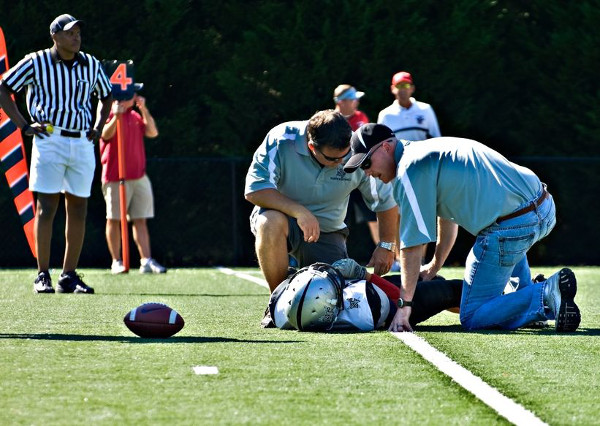 TBI typically occurs when a sudden external force jolts the head or body that damages and functionally impairs the brain. TBIs can happen through falls, motor vehicle accidents, sports-related impacts, assaults, explosive blasts, etc. Injuries range in their complexity and severity, from “mild concussions” with a brief change in mental status or consciousness to “severe” with an extended period of unconsciousness or amnesia after the injury. New research is now highlighting the disturbing long-term impacts of repetitive TBI / concussions, which can trigger age-associated neuropathologies that result in a range of symptoms and disabilities over many years.
TBI typically occurs when a sudden external force jolts the head or body that damages and functionally impairs the brain. TBIs can happen through falls, motor vehicle accidents, sports-related impacts, assaults, explosive blasts, etc. Injuries range in their complexity and severity, from “mild concussions” with a brief change in mental status or consciousness to “severe” with an extended period of unconsciousness or amnesia after the injury. New research is now highlighting the disturbing long-term impacts of repetitive TBI / concussions, which can trigger age-associated neuropathologies that result in a range of symptoms and disabilities over many years.
- In the U.S., approximately 1.7 million people sustain a TBI annually and seek medical care2, and the CDC estimates that 1.6 to 3.8 million additional concussions occur in sports and recreational activities annually that are not treated in a hospital or emergency department3
- 5-10% of athletes will experience a concussion in any given sport season4
- Football is the most common sport with concussion risk for males (75% chance for concussion)
- Soccer is the most common sport with concussion risk for females (50% chance for concussion)
- TBI is the leading cause of death and disability in children and young adults1 and the most commonly received wound among military personnel; nearly 20% of U.S. Service Members deployed since 2003 have sustained at least one TBI5
- The indirect and direct medical costs of TBI are now estimated at $77 billion annually2
- At least 5 million Americans (almost 2%) have a permanent need for help in performing daily activities as a result of TBI6
The tremendous incidence and long-term consequences of TBI highlight the considerable epidemic at hand, and the need for further research and neuroprotective treatments.
1 CDC
2 UCSF and CDC
3 CDC; Langlois 2006
4 Sports Concussion Institute 2012
5 Chronic Effects of Neurotrauma Consortium (CENC); Warden 2006; Scholten 2012; Taylor 2012; Gavett 2011; Guskiewicz 2005; Omalu 2005
6 CDC; Thurman 1999
